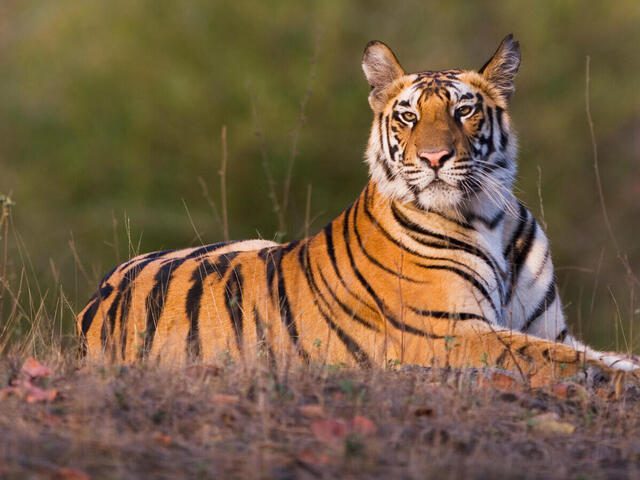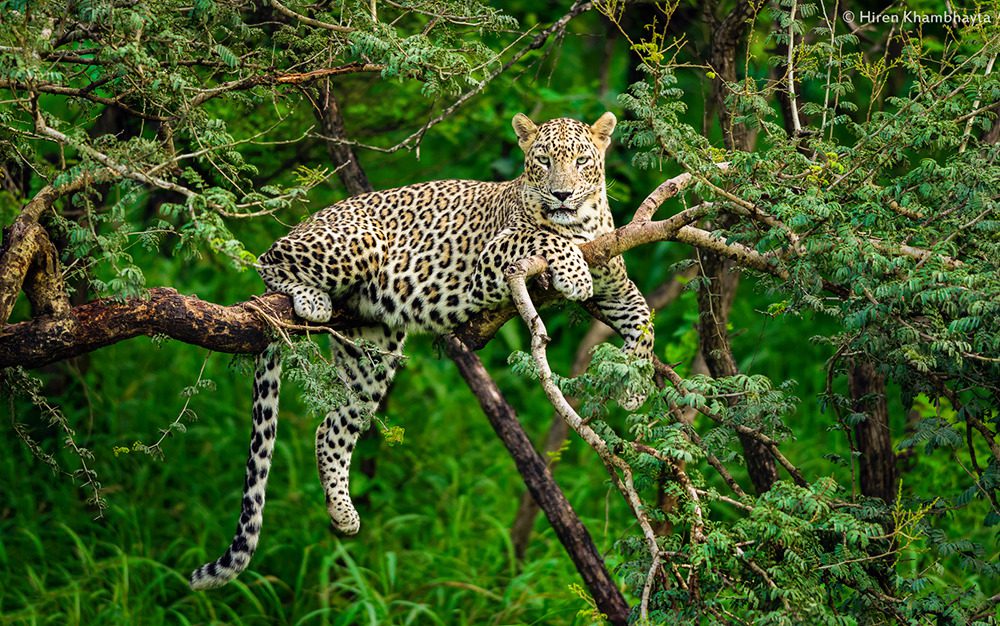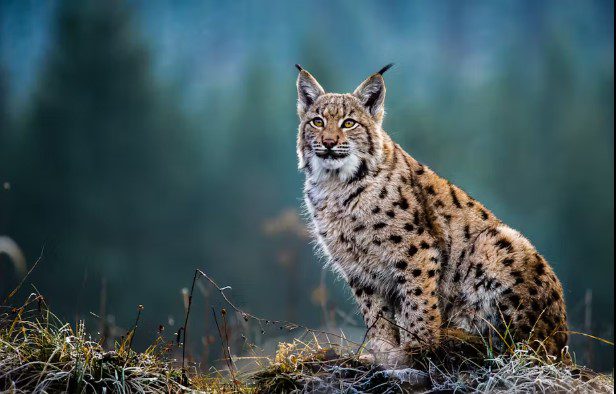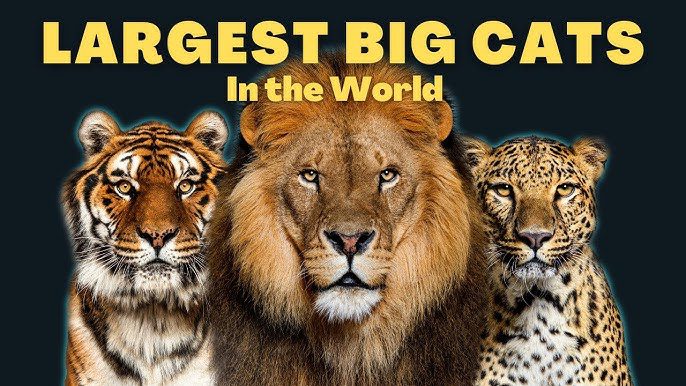Top 10 Greatest Big Cats In The World
Introduction
Big cats have fascinated humans for centuries with their raw power, graceful movements, and mysterious beauty. These apex predators are not only symbols of strength and courage in many cultures, but they also play vital roles in maintaining the health and balance of ecosystems around the world. From the snow-covered peaks of Central Asia to the dense jungles of South America, big cats are found in a wide variety of habitats, each perfectly adapted to their environment.
Despite their fearsome reputations, many of these majestic animals are now threatened by habitat loss, poaching, and human conflict. This list highlights ten of the greatest big cats—species that stand out for their unique characteristics, evolutionary success, and iconic status. Whether known for speed, strength, stealth, or beauty, each of these cats represents the extraordinary diversity and wonder of the animal kingdom.

Tiger (Panthera tigris)
The tiger is the largest of all big cats and a true symbol of strength and power. With its bold black stripes and fiery orange coat, it commands attention and respect. Tigers are solitary hunters, capable of taking down prey much larger than themselves. Native to Asia, they thrive in a range of habitats, from dense forests to mangrove swamps. Sadly, tigers are critically endangered, with habitat loss and poaching posing serious threats to their survival.
Lion (Panthera leo)
Lions are unique among big cats due to their social nature, living in prides led by dominant females. Known as the “King of the Jungle,” lions embody bravery and leadership. They are powerful hunters, often working together to bring down large prey like buffalo or wildebeest. Found mostly in African savannas, a small population also exists in India. Though iconic and admired, lions face growing challenges from habitat encroachment and human-wildlife conflict.
Jaguar (Panthera onca)
The jaguar is the largest big cat in the Americas and the third-largest in the world. Known for its incredibly powerful bite, it can pierce the skulls or shells of its prey with ease. Jaguars are solitary and secretive, often found in rainforests, wetlands, and grasslands across Central and South America. Their stunning rosette-patterned coats and stealthy hunting skills make them one of nature’s most formidable predators. Unfortunately, deforestation and illegal hunting threaten their populations.

Leopard (Panthera pardus)
Leopards are masters of adaptability, found in diverse habitats ranging from African savannas to Asian jungles. Their spotted coats provide excellent camouflage, and they are incredibly agile climbers, often seen lounging in trees. Leopards are solitary and opportunistic hunters, known to drag prey up into trees to protect it from scavengers. Their stealth and versatility make them one of the most widespread and resilient big cats, though they still face threats from habitat loss and human conflict.
Snow Leopard (Panthera uncia)
The snow leopard is an elusive and beautiful cat that inhabits the rugged mountain ranges of Central Asia. With its thick fur, long tail, and smoky-gray coat patterned with black rosettes, it is perfectly adapted to cold, high-altitude environments. Known for its stealth and agility, the snow leopard is an excellent climber and skilled predator. Although it faces threats from poaching and habitat fragmentation, conservation efforts are helping protect this mystical big cat.
Cheetah (Acinonyx jubatus)
The cheetah is renowned for being the fastest land animal, capable of reaching speeds up to 70 mph in short bursts. Its slender body, large nasal passages, and long legs are designed for incredible acceleration and speed. Unlike other big cats, cheetahs are not built for strength but rather for chasing down prey in open savannas. While cheetahs are admired for their speed, they are vulnerable to threats such as habitat loss and a shrinking gene pool, making conservation efforts essential.
Cougar (Puma concolor)
Also known as mountain lions or pumas, cougars are highly adaptable big cats that can thrive in a variety of habitats, from dense forests to arid deserts. Native to the Americas, they are skilled hunters, preying on animals as large as deer. Solitary by nature, cougars are elusive and often prefer to stay out of sight. While they are not currently endangered, they face growing challenges from habitat encroachment and human-wildlife conflict, especially as their populations expand into new areas.
Clouded Leopard (Neofelis nebulosa)
The clouded leopard is a strikingly beautiful cat, named for the cloud-like patterns on its fur. This medium-sized big cat is found in the forests of Southeast Asia, where its agility in the trees makes it a superb arboreal hunter. Known for its powerful jaws and excellent climbing abilities, the clouded leopard preys on small to medium-sized animals. Despite its elusive nature, the clouded leopard is facing threats from deforestation and poaching, leading to a decline in its population.

Eurasian Lynx (Lynx lynx)
The Eurasian lynx is the largest member of the lynx family, known for its tufted ears and distinctive short tail. Found across the forests and mountainous regions of Europe and Asia, this solitary predator is highly skilled at hunting small to medium-sized prey such as roe deer and hares. With keen eyesight and stealthy movements, the Eurasian lynx is an efficient and elusive hunter. Although its population is relatively stable in some areas, habitat destruction and hunting still pose ongoing threats.
Sunda Clouded Leopard (Neofelis diardi)
The Sunda clouded leopard, found only on the islands of Borneo and Sumatra, is a rare and elusive big cat. Smaller and more slender than its mainland counterpart, the Sunda clouded leopard is known for its striking coat pattern and excellent climbing abilities. It thrives in the dense rainforests of Southeast Asia, preying on birds, monkeys, and other small mammals. However, due to deforestation and illegal hunting, the Sunda clouded leopard is considered vulnerable and faces an uncertain future.
Conclusion
Big cats are among the most awe-inspiring and essential animals in the natural world. Their diverse adaptations, from the lightning speed of cheetahs to the stealth of leopards, showcase nature’s brilliance. However, many of these magnificent creatures face critical threats from habitat loss and poaching. Protecting these apex predators is vital to preserving ecosystems and maintaining biodiversity. As we learn more about them, it becomes increasingly clear that their survival depends on our collective conservation efforts.
You Can Also Read: Top 10 Places to Buy Pets
FAQs
What is the largest big cat?
The largest big cat is the tiger, specifically the Siberian tiger, which can weigh up to 700 pounds.
Why are big cats endangered?
Big cats are endangered due to habitat loss, poaching for their fur and body parts, and human-wildlife conflict.
What is the fastest big cat?
The cheetah holds the title for the fastest big cat, reaching speeds of up to 70 mph in short bursts.
Do all big cats live in groups?
No, not all big cats live in groups. Lions are the only big cats that form social groups, known as prides. Most others, like tigers and leopards, are solitary.
How can we help protect big cats?
Protecting big cats involves preserving their natural habitats, supporting anti-poaching laws, and raising awareness about their conservation needs.
